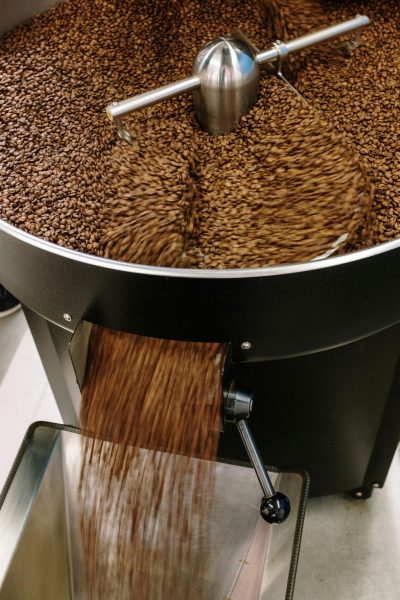
Breakfast blend coffee represents one of the most popular and commercially successful coffee styles in the roasting industry. This approachable, well-balanced coffee serves as the perfect morning companion for millions of coffee drinkers worldwide. For roasteries looking to create an exceptional breakfast blend, understanding which green beans to select forms the foundation of success.
The art of crafting breakfast blend lies in achieving the perfect balance of mild acidity, smooth body, and subtle complexity that appeals to a broad audience. Unlike single-origin coffees that showcase specific regional characteristics, breakfast blends focus on harmony and consistency.
Understanding Breakfast Blend Coffee Roasting Fundamentals
Breakfast blend coffee roasting requires a delicate approach that emphasizes balance over boldness. These blends typically feature medium roast levels that preserve the coffee’s natural sweetness while developing enough body to satisfy diverse palates.
The roasting process for breakfast blends focuses on achieving even development across multiple bean varieties. Each component bean brings unique characteristics that must be carefully managed during the roasting process. Temperature control and timing become crucial factors in maintaining the blend’s intended flavor profile.
Most successful breakfast blends combine beans with complementary roasting behaviors. Some varieties develop sweetness quickly, while others require longer development times to achieve optimal flavor. Understanding these differences helps roasters create more consistent and appealing final products.
Essential Characteristics of Green Beans for Breakfast Blend
When selecting green beans for breakfast blend, several key characteristics determine suitability. The ideal beans possess moderate acidity levels that provide brightness without overwhelming the palate. These coffees should exhibit natural sweetness that emerges during the roasting process.
Body development represents another critical factor in bean selection. Breakfast blend components should contribute to a medium-bodied cup that feels substantial without being heavy. This balance ensures the coffee satisfies both casual drinkers and coffee enthusiasts.
Flavor compatibility becomes essential when combining multiple origins. Each bean should complement rather than compete with other blend components. The goal involves creating synergy where the combined result exceeds the sum of individual parts.
Popular Bean Origins for Breakfast Blends
Several coffee-growing regions consistently produce excellent breakfast blend components:
- Central American coffees from Guatemala, Costa Rica, and Honduras provide reliable acidity and clean flavor profiles that form excellent blend foundations
- South American beans from Colombia and Brazil contribute body, sweetness, and stability to breakfast blend formulations
- African coffees from Ethiopia or Kenya can add bright, fruity notes when used in smaller proportions to enhance complexity
- Indonesian coffees from Sumatra offer earthy, herbal characteristics that provide depth and grounding to lighter blend components
The key lies in balancing proportions to achieve the desired flavor profile. Most successful breakfast blends use Central and South American coffees as the base, with smaller amounts of African or Indonesian beans for accent and complexity.
Roasting Breakfast Blend Coffee: Techniques and Best Practices
The roasting breakfast blend coffee process requires careful attention to development time and temperature curves. Most breakfast blends perform best when roasted to medium levels, typically finishing between first crack and the beginning of second crack.
Temperature management throughout the roasting cycle affects flavor development significantly. Gradual heat application allows each bean variety to develop properly without scorching or underdevelopment. This approach ensures all blend components contribute their intended characteristics.
Batch consistency becomes particularly important for breakfast blends due to their commercial nature. Customers expect the same flavor experience with each purchase, making precise roasting protocols essential for business success.
Balancing Flavor Profiles in Your Breakfast Blend
Creating harmonious flavor profiles requires understanding how different beans interact during blending and brewing. Acidity levels must complement rather than clash, while body contributions should build rather than compete.
Sweetness development varies significantly between origins and processing methods. Natural processed coffees often provide more fruit-forward sweetness, while washed coffees contribute cleaner, more refined sweet notes. Balancing these elements creates depth and complexity.
Consider how flavors evolve during the brewing process. Some characteristics emerge immediately, while others develop as the coffee cools. Testing blends at different temperatures helps ensure consistent performance across various brewing methods.
Quality Considerations When Sourcing Green Beans
Several quality factors significantly impact breakfast blend success:
- Processing consistency ensures reliable flavor development and reduces batch-to-batch variation in your final roasted product
- Moisture content should fall within optimal ranges (10-12%) to ensure even roasting and proper flavor development
- Bean density affects heat transfer during roasting and influences final flavor characteristics
- Harvest timing impacts flavor potential, with recently harvested beans typically offering superior cup quality
- Storage conditions during transport and warehousing protect bean quality and extend shelf life
Working with reputable suppliers who understand these quality parameters helps ensure consistent results and customer satisfaction.
Building Your Perfect Breakfast Blend Recipe
Developing a successful breakfast blend requires systematic testing and refinement. Start with proven base recipes using 60-70% Central American coffees, 20-30% South American varieties, and 5-15% accent coffees from other regions.
Document all ratios, roasting parameters, and cupping notes during development. Small adjustments in proportions can dramatically affect the final cup quality. Patience during the development process pays dividends in creating a distinctive and marketable product.
Consider seasonal availability when finalizing blend recipes. Having backup options for each component ensures year-round production consistency even when specific lots become unavailable.
For roasteries seeking premium green beans for breakfast blend development, Intercontinental Coffee Trading offers carefully sourced coffees from the world’s finest growing regions. Contact our team today to discuss your breakfast blend requirements and access our extensive inventory of quality green coffee beans.
